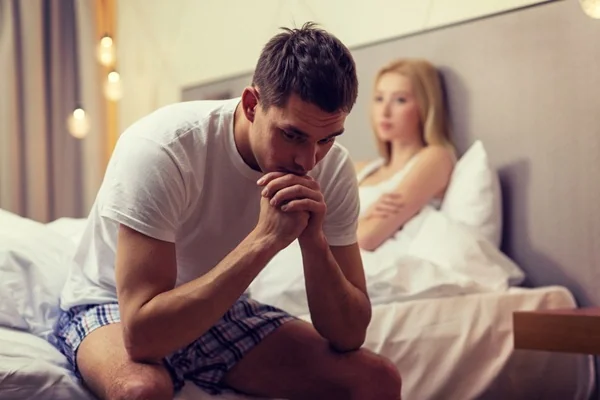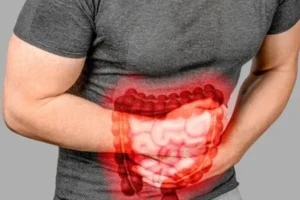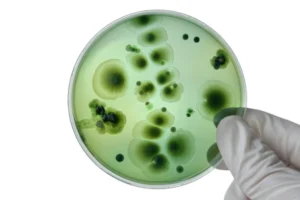Passion and energy are not only for the young. As men move past 40, many notice changes in drive, mood, and performance. This can feel discouraging, but science is beginning to offer new insights. One peptide gaining attention in research is PT-141 for men.
Early studies suggest it may help support desire and motivation by working in the brain, not just on blood flow. Along with PT-141, another peptide called oxytocin is also being studied for its role in bonding, mood, and connection.
In this article, we’ll look at what the research says about PT-141, how it may relate to oxytocin, and why these findings are drawing interest in the study of men’s health and performance after 40.
Explore PT-141 for men from Peptide Works, a peptide studied for its role in supporting desire, motivation, and performance.
How Does PT-141 Work in the Brain?

Unlike drugs that focus only on blood flow, PT-141 for men has been studied for its effects in the central nervous system. Research suggests it binds to melanocortin receptors (MC3R and MC4R) in the hypothalamus, an area of the brain tied to sexual desire and motivation.
When these receptors are activated, signals linked to dopamine release and arousal pathways may become more active. This central focus is what makes PT-141 unique in research compared to compounds that act mainly on vascular function.
Researchers also note that the brain does not work in isolation. Peptides like oxytocin, often studied for their role in bonding and mood, are part of the same wider network of signals.
Looking at PT-141 for men alongside oxytocin helps scientists explore how these pathways may connect in studies on desire and performance. This makes it important to examine the receptors that drive these responses.
Role of Melanocortin Receptors Play in Desire
The melanocortin system has five receptors, called MC1R to MC5R. Two of them, MC3R and MC4R, are strongly linked to sexual function. These receptors are found in areas of the hypothalamus that regulate drive, stress, and behavior.
When PT-141 for men binds to MC3R and MC4R, it acts as an agonist. This activation raises levels of cAMP inside neurons, which makes the cells fire more actively. One outcome is stronger dopamine signaling, a key factor in reward and motivation.
Some studies also note activity between the melanocortin system and oxytocin neurons. Since oxytocin is tied to social and emotional signaling, this connection is being studied as part of the larger network that shapes sexual behavior. Because dopamine is central in these pathways, its influence deserves closer attention.

How Does PT-141 for Men Influence Dopamine and Motivation?
One reason PT-141 for men is studied with such interest is its effect on dopamine pathways. Dopamine is a neurotransmitter that acts like a signal for reward and motivation in the brain. When melanocortin receptors are activated, they increase dopamine activity in areas such as the mesolimbic system, which plays a central role in sexual drive.
This is important because dopamine supports not only arousal but also the drive linked to motivation and anticipation. In studies, PT-141 for men has shown an influence on these circuits that differs from compounds acting only on blood flow.
When receptor activity leads to dopamine release, PT-141 connects more directly with the brain’s reward system in men. One pathway of particular interest is the mesolimbic circuit, often described as the core of motivation.
How Does PT-141 for Men Engage the Mesolimbic Reward Pathway?
When PT-141 for men activates melanocortin receptors, one of the downstream effects is stronger dopamine activity within the mesolimbic pathway. This circuit originates in dopamine-producing neurons of the ventral tegmental area (VTA) and sends projections forward to the nucleus accumbens. Together, these regions form the core of the brain’s reward network, which is central to motivation, anticipation, and sexual behavior.
As dopamine signaling intensifies in this loop, feelings of reward and reinforcement grow stronger. By linking receptor activation to dopaminergic output, PT-141 demonstrates how a molecular trigger can influence higher brain systems that regulate desire.
This focus on the reward loop naturally brings attention to the nucleus accumbens.
How Does PT-141 for Men Affect the Nucleus Accumbens?

The nucleus accumbens (NAcc) is more than just a stop in the reward pathway it is where motivation is translated into action. This region is built mostly from medium spiny neurons, which carry either D1-type receptors that promote reward signals or D2-type receptors that dampen them. The balance of these signals shapes how strongly an individual responds to sexual cues.
In studies, PT-141 for men has been linked to activity that enhances D1-related signaling, tipping the scale toward approach and motivation. This selective effect makes the NAcc a focal point for understanding desire.
Researchers have also begun examining how oxytocin inputs into the NAcc may interact with dopamine, connecting bonding signals with reward-based motivation in one shared hub.
Oxytocin peptide adds another layer by linking motivation with connection.
Discover Oxytocin from Peptide Works, a peptide linked to social bonding and motivation, offering insights into connection and behavior.
What Role Does Oxytocin Play in Motivation and Connection?

Oxytocin shapes motivation by changing how the brain reacts to social cues. In the ventral striatum, it boosts responses to signals like touch or eye contact. This makes social and sexual cues feel more rewarding and increases the drive to approach and connect.
It also interacts with dopamine pathways. Oxytocin can adjust how dopamine neurons fire, helping bond-related experiences become linked with reinforcement. This link explains why oxytocin is tied to trust, persistence in relationships, and lasting pair-bonds.
When considered alongside PT-141 for men, oxytocin highlights a different layer of desire. PT-141 is tied more to drive, while oxytocin supports the emotional and social pull that keeps connections strong. These insights reflect the expanding role of peptide research in men’s health.
PT-141 for Men and the Expanding Role of Peptides
Research on PT-141 for men is opening new ways to understand how desire and performance are shaped in the brain, particularly for men over 40. Findings become even more compelling when viewed with oxytocin, a peptide tied to bonding and emotional connection. The overlap between these systems suggests that drive and attachment are not separate, but linked within shared neural pathways. For scientists, this makes peptide research an expanding field of discovery.
At Peptide Works, we provide research peptides with worldwide shipping to support continued exploration of PT-141, oxytocin, and their role in health and behavior.
All peptides and compounds mentioned are strictly for research purposes only and not for human use.
References
[1] Molinoff PB, Shadiack AM, Earle D, Diamond LE, Quon CY. PT-141: a melanocortin agonist for the treatment of sexual dysfunction. Ann N Y Acad Sci. 2003 Jun;994:96-102.
[2] King SH, Mayorov AV, Balse-Srinivasan P, Hruby VJ, et al. Melanocortin receptors, melanotropic peptides and penile erection. Curr Top Med Chem. 2007;7(11):1098-1106.
[3] Scofield MD, Heinsbroek JA, Gipson CD, Kupchik YM, et al. The Nucleus Accumbens: Mechanisms of Addiction across Drug Classes Reflect the Importance of Glutamate Homeostasis. Pharmacol Rev. 2016 Jul;68(3):816-71.
[4] Love TM. Oxytocin, motivation and the role of dopamine. Pharmacol Biochem Behav. 2014 Apr;119:49-60. doi: 10.1016/j.pbb.2013.06.011. Epub 2013 Jul 9.









